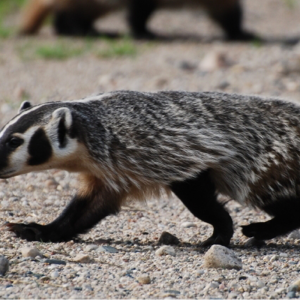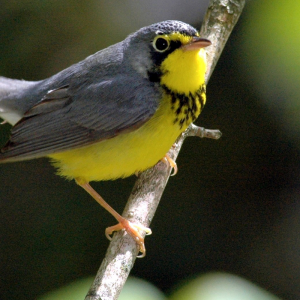Grand Héron du Pacifique
Vital Signs
Common name: Great Blue Heron (fannini subspecies) — also known as Pacific Great Blue Heron
Latin name: Ardea herodias fannini
Status under SARA: Special Concern, 2008 COSEWIC assessment:Special Concern
Range: Pacific Coast, from the regions of Prince William Sound in Alaska to Puget Sound in Washington State. In Canada, the fannini subspecies is found only on the northern and southern coasts of British Columbia, including its large coastal islands.
Size: While standing and with its neck extended, averages heights over 1 m and measures 97-137 cm in length.
Population estimate: Best available estimates suggest Canadian populations of nesting adult herons are of 4,000-5,000 individuals.
The Facts
- Currently, there are five identified subspecies of the Great Blue Heron and, of these, two reside in British Columbia.
- The Great Blue Heron has blue and grey plumage combined with a black stripe that extends from its eyes to the back of the head. It is easy to identify this large bird fishing along shorelines and even in suburban ponds. The fannini subspecies is actually smaller and slightly darker in colouration when compared to the Great Blue Heron (herodias subspecies) found in the rest of North America.
- Great Blue Heron breeding couples are monogamous and both parents participate in incubating the eggs.
- The main predator of the species in British Columbia is the Bald Eagle.
- This subspecies lives year round on the Pacific Coast and mostly breeds in the Strait of Georgia. During this time, the fannini gathers in colonies for courtship, nesting and rearing of its young in large platform-like stick nests usually situated high in trees. Less than two chicks from an average of four eggs will fledge, and less than 25 percent of juveniles survive their first winter.
- The Great Blue Heron fannini subspecies typically hunts a wide selection of animals but concentrates on small fish during its breeding season. In the winter months it will switch to a diet that includes small mammals.
The Story
Many Canadians are familiar with the sight of this beautiful, tall, and graceful wading bird. With long wings, thin legs, and a short tail, it is the biggest heron species in North America.
There are a number of threats to the species’ continued survival. Roughly half of the species’ global population breeds in Canada. Surveys conducted on bird colonies in British Columbia suggest a significant decline in the species’ reproductive rate since the 1970s and the proportion of nesting pairs that successfully raise at least one fledgling is considerably lower than in the past. Forested areas, which provide the herons nesting grounds, have declined due to urban growth, and there has also been disturbance and destruction of nesting sites by logging operations and road construction. In fact, between the periods of 1972 to 1985 and 1998 to 1999, destruction of heron habitat on British Columbia’s southern coast led to 21 colonies abandoning nesting sites.
What is Being Done
Today, Great Blue Heron nests and eggs are protected under the British Columbia government’s Wildlife Act, as well as the Migratory Birds Convention Act (1994). The Committee on the Status of Endangered Wildlife in Canada (COSEWIC) assessment in April 2008 designated the Great Blue Heron fannini subspecies as “Special Concern.” In February 2010, it was officially designated “Special Concern” under the Species at Risk Act (SARA), reflecting the continued threat of extirpation and habitat destruction the species faces in Canada. While this is a great victory and a step in the right direction, much more needs to be done for its continued presence in British Columbia’s lakes, ponds and rivers.
What You Can Do
- Support Nature Canada’s Important Bird Area program to help protect the habitat of the Great Blue Heron and that of other birds in danger of disappearing in Canada.
- Be mindful of protected areas where the Great Blue Heron nests and lives, and find out how you can continue to support and lobby for conservation laws through Nature Canada’s monthly eNewsletter (sign up below).
- Contact BC Nature and find out how you can help them support their conservation efforts.
Resources:
Species at Risk Public Registry, SARA
Thanks to Nature Canada volunteer Michael Berrigan for contributing this profile.


